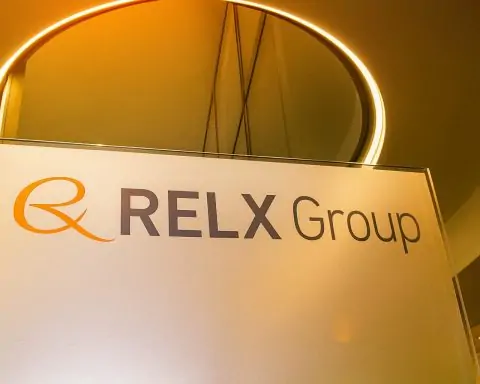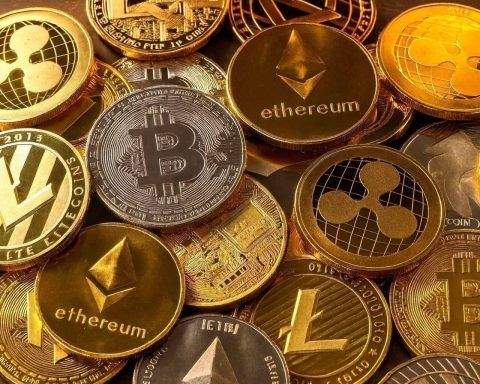- Historic rally: This week gold topped $4,000 an ounce for the first time ever (peaking around $4,059) [1], while silver briefly traded above $51.20/oz (its highest since 1980) [2]. Both metals are riding a powerful bull run – gold is up roughly 50–53% in 2025 and silver around 70–75% (silver’s YTD gain far outpaces gold’s) [3] [4].
- Market forces: The surge reflects a “flight to safety” amid global uncertainty [5] [6]. Key drivers include geopolitical risks (Middle East conflicts, Ukraine war), U.S. political gridlock (the recent government shutdown), high global debt, expectations of U.S. Fed rate cuts, and a weaker dollar [7] [8]. Central banks are hoovering up gold (on pace to buy ~1,000 tonnes in 2025 [9]), and massive ETF inflows have tightened physical supply. Silver also benefits from industrial demand (electronics, solar, EVs) against chronically thin production [10].
- Profit-taking pullback: After the record highs, prices eased somewhat. A ceasefire deal in the Israel–Hamas conflict and traders booking gains nudged gold back below $4,000 and silver under $50 [11] [12]. For example, Reuters reports spot gold around $3,970 and silver ~$50.50 on Oct 9, down from their peaks [13] [14]. The U.S. dollar strengthened as markets shifted, making bullion pricier for overseas buyers [15] [16]. Still, analysts emphasize this as a healthy pause, not a bursting bubble [17] [18].
- Bullish outlook & forecasts: Many experts remain bullish on the metals. UBS analysts foresee gold reaching about $4,200/oz “in the coming months” [19], and Goldman Sachs has raised its gold forecast to $4,900/oz by late 2026 [20] [21]. HSBC’s commodities team notes silver “stands on the cusp” of a new record and could trade between $45–$53/oz into year-end [22] [23]. Veteran metals strategist Ross Norman points out “pretty solid fundamentals behind silver’s move” (only modest speculative longs), not a mere bubble [24] [25]. In short, major banks and analysts argue the rally has room to run on supply shortages and strong demand.
- Investor impact: This metal mania has spilled into markets. The big gold ETF (GLD) is up ~50% YTD [26] and gold-mining funds have exploded (e.g. a leveraged gold-miners ETF has jumped ~740% this year [27]). On individual stocks, gold producers surged – for example, Barrick Gold (ticker B) rallied above ~$34 before easing to ~$33 by Oct 9 [28]. Silver shortages are so severe that India’s Kotak Mahindra halted new investment into its silver ETF due to supply constraints [29]. Precious-metal futures reflect the frenzy: as of mid-October, gold futures traded near $3,999/oz and silver futures around $48.2/oz [30] (roughly in line with spot levels).
Record-Breaking Gold and Silver Prices
Gold’s latest high (~$4,059/oz on Oct 8) shattered the previous record and caps a nearly 50% rally year-to-date [31] [32]. (Gold began 2025 in the high $2,700s.) Silver’s spike is even more dramatic: after languishing in the low $30s at the start of the year, it rocketed above $50 — briefly touching $51.22 — in mid-October [33] [34]. That represents well over a 70% gain in 2025 for silver, significantly outpacing gold. To put this in perspective: silver’s run has re-tightened the gold/silver ratio (ounces of silver per ounce of gold) to historically low levels (around 82 recently), indicating silver is “catching up” after years of underperformance [35].
Markets are astonished by how far prices have come. As Reuters notes, gold is on track for its biggest annual jump since 1979, while even traditionally riskier assets like major stock indexes have risen far less (the S&P 500 is up ~15% YTD) [36]. The precious metals rally has even outpaced Bitcoin’s ~30% climb [37]. In short, gold and silver are smashing old records in an accelerating bull market.
Why Precious Metals Are Rallying
Analysts attribute the surge to “a storm of economic and geopolitical risks” that have investors seeking safe havens [38] [39]. In practice this means multiple factors aligned:
- Fed policy & real rates: The U.S. Federal Reserve began cutting interest rates in September, and markets expect further cuts in coming months. Lower rates reduce the opportunity cost of holding non-yielding gold and silver. As TD Securities’ Bart Melek explains, with rates heading lower, “gold is more attractive… investors aren’t losing out on higher yields” [40]. Indeed, gold often shines when real (inflation-adjusted) yields fall.
- Weak U.S. dollar: The dollar index has slipped in recent months (off a 10-year high earlier in 2025), making dollar-priced bullion cheaper for foreign buyers. Reuters notes the dollar was near a two-month low around Oct 9 [41], propping up gold and silver demand globally.
- Inflation and central-bank buying: Inflation concerns remain, partly driven by tariff policies and fiscal deficits. Central banks worldwide are stockpiling gold, diversifying away from dollars. Ts2 analysis highlights that official buyers are on pace to purchase roughly 1,000 metric tons of gold in 2025, a four-year streak of record accumulation [42]. “Central banks are buying gold hand over fist,” the report notes [43]. When central banks gobble bullion at that scale, it creates a “strong foundation” under prices, as veteran strategist Nigel Green and others have observed [44] [45].
- Geopolitical uncertainty: Ongoing conflicts (Middle East, Ukraine), political instability (a near-U.S. govt shutdown) and concern over fiscal deficits have boosted demand. As one Reuters commentator explains, gold traditionally thrives when investors fret over inflation or economic slowdown – even more so now with the added risk of wars and tariffs [46]. Pictet’s Arun Sai puts it succinctly: in times of “paradigm shift” and perceived currency debasement, “people always move to gold” as the “ultimate hedge” [47].
- ETF inflows and tight supply: Big inflows into gold and silver ETFs have sucked up metal. For silver in particular, supply is very tight. Silver is largely mined as a byproduct of other metals, so supply can’t quickly expand. Ts2 notes 2025 is projected to be the fifth straight year of a global silver deficit (demand outstripping mine output) [48]. This crunch shows up in market mechanics: silver is trading in backwardation (spot prices above futures), indicating scarcity. In fact, a trader at InProved notes the silver market’s backwardation and rising lease rates suggest greater volatility ahead [49].
Overall, the rally rests on what many insiders call “solid fundamentals” rather than pure speculation. As metals analyst Ross Norman observes, “Net long positions are only modestly higher, so this isn’t just speculation… there are pretty solid fundamentals behind silver’s move” [50]. In other words, rising inflation, debt, and institutional demand are powering the run. A Reuters analysis even finds stocks, cryptocurrencies and gold all rising together – a rare phenomenon reflecting a broad “rally in faithless money” [51].
Profit-Taking and Short-Term Pullback
Of course, sky-high prices have prompted some traders to lock in gains. After gold and silver hit records mid-week, both eased on Thursday–Friday. Reuters reports spot gold slipping about 2% below $4,000 on Oct 9 as the dollar firmed and investors booked profits [52] [53]. Silver likewise retreated from its peak (trading around $49–50) after hitting $51.22 [54] [55]. Technical charts showed gold briefly overbought, triggering routine selling pressures [56].
Political developments also weighed: news of a tentative Israel–Hamas ceasefire reduced immediate safe-haven demand. As Tai Wong, an independent metals trader, noted in Reuters, speculators “took some gold chips off the table” once the ceasefire “reduced the temperature” in the Middle East [57]. Similarly, Spot gold eased as “risk-off” flows waned when talks hinted at peace [58] [59].
However, both the buzz and the dips have been extreme rather than lasting. Even after the pullback, gold remained near $4,030–4,050 by Oct 9 [60], and silver around $50. Many analysts stress this is just a breather. As Allegiance Gold’s Alex Ebkarian put it: crossing $4,000 “triggered profit-taking,” but he still calls this a long-term secular bull market [61]. He even suggests any shallow pullback (e.g. if silver’s backwardation eases) could be a buying opportunity [62]. In short, the consensus is the metals have simply hit an inflection point – ripe for consolidation – but underlying demand remains intact.
Expert Views and Forecasts
Experts interviewed by Reuters and the media span the gamut from cautious to wildly bullish. For example, UBS’s global wealth team told clients they “think the rally is not yet done” and see gold reaching about $4,200/oz in the coming months [63]. Goldman Sachs raised its December 2026 target to $4,900/oz (up from $4,300) citing strong inflows [64] [65]. HSBC analysts similarly forecast silver will soon top its old peak: they wrote that silver is “on the cusp” of the $50 record and likely to surpass it “in the near term,” expecting roughly $45–$53/oz trading into year-end [66] [67].
Other strategists emphasize the long-term case. State Street’s Michael Metcalfe observes we’re at an “inflection point for inflation” [68], suggesting gold’s role as an inflation hedge will remain crucial. Pictet’s Arun Sai explicitly calls gold a “hedge everything” asset now [69]. And Ross Norman (ex-Bloomberg) stresses that aside from a short-term pullback, the “bullish bias remains intact” with the “path to new all-time highs… still wide open” [70].
Not everyone agrees on only upside. A few traders and commentators warn of a sharp correction. High-profile investor Robert Kiyosaki (author of Rich Dad Poor Dad) recently warned that “bubbles are about to start busting” and gold/silver could plunge before “offering a buying opportunity” [71]. One India-based analyst even speculated gold and silver might fall 50% from current levels in a severe sell-off [72] (reverting to ~$2,000 for gold, ~$25 for silver). These bear scenarios draw on 1980/2011 analogies, when silver’s $50 spikes ended in crashes. Such skeptics caution that precious metals can be extremely volatile in the short run.
For most institutional investors though, these metals are still largely seen as insurance in a risky environment. As UBS’s Ulrike Hoffmann-Burchardi told clients, gold’s rise confirms “confidence in paper money is eroding,” and it’s better to own gold than sit in cash or bonds [73]. The message from many strategists is that if the macro drivers persist (debt, inflation, Fed easing), gold and silver have a higher “floor” than in past cycles. That said, analysts do expect continued volatility: swings of 5–10% are seen as likely normal as markets digest new developments [74] [75].
What’s Next: Outlook and Risks
Looking ahead, most forecasts point to further strength (or at least continued lofty levels) for now. UBS and Goldman’s targets suggest gold could surpass $4,200–4,500 by 2026, with silver breaking firmly above $50 for the first time. Some even see gold on a “sustainable upswing” toward permanently higher price levels [76]. Inflation concerns (especially if tariffs broaden) and any further Fed dovishness would bolster those bets.
On the other hand, risks to this rally include a resurgent dollar or unexpected economic shifts. If the dollar index turns strongly higher, or if bond yields rise (for example, if inflation surprises to the upside or Fed hawks regain influence), both metals would likely cool off. Geopolitical de-escalation could also reduce immediate safe-haven demand. For instance, when Israel and Hamas agreed on a ceasefire, gold’s “safe-haven appeal waned somewhat” [77], illustrating how peace news can deflate the rally temporarily.
Finally, liquidity conditions matter: silver markets already lack depth (backwardation shows this). If one side of the market suddenly moves (as Kiyosaki and others fear), silver could overshoot on the downside. Many traders remind us that silver is “notoriously volatile” and prone to boom-bust cycles [78] [79]. Gold, being more widely held, tends to be a bit steadier but is not immune.
In summary, the gold/silver bull market remains powerful but also bifurcated: a short-term chill or correction seems likely given the blow-off top, yet the dominant momentum and fundamentals are bullish. Investors and analysts are closely watching any new cues (Fed hints, currency moves, geopolitical shifts). If uncertainty persists, the next milestone on the horizon seems to be gold around $4,200–4,500 and silver solidly above $50, with dips seen by many as buying opportunities. As one senior trader puts it, “the bullish bias remains intact… the path to new all-time highs is still wide open” [80] – even as caution is warranted about near-term swings.
Sources: Current market data and expert commentary from Reuters, Fox Business, CBS News, Investing.com, and financial analysts [81] [82] [83] [84] [85], among others, were used in this report. All figures and quotations are drawn from cited sources.
References
1. www.reuters.com, 2. www.reuters.com, 3. ts2.tech, 4. www.reuters.com, 5. ts2.tech, 6. www.reuters.com, 7. ts2.tech, 8. www.reuters.com, 9. ts2.tech, 10. ts2.tech, 11. www.reuters.com, 12. www.reuters.com, 13. www.reuters.com, 14. www.reuters.com, 15. ts2.tech, 16. www.reuters.com, 17. www.reuters.com, 18. ts2.tech, 19. ts2.tech, 20. ts2.tech, 21. www.cbsnews.com, 22. ts2.tech, 23. www.investing.com, 24. ts2.tech, 25. ts2.tech, 26. www.foxbusiness.com, 27. www.foxbusiness.com, 28. www.investing.com, 29. www.reuters.com, 30. www.investing.com, 31. www.reuters.com, 32. ts2.tech, 33. www.reuters.com, 34. ts2.tech, 35. ts2.tech, 36. ts2.tech, 37. www.reuters.com, 38. ts2.tech, 39. www.reuters.com, 40. www.cbsnews.com, 41. ts2.tech, 42. ts2.tech, 43. ts2.tech, 44. ts2.tech, 45. www.cbsnews.com, 46. www.reuters.com, 47. www.reuters.com, 48. ts2.tech, 49. www.reuters.com, 50. ts2.tech, 51. www.reuters.com, 52. www.reuters.com, 53. www.reuters.com, 54. www.reuters.com, 55. www.hindustantimes.com, 56. ts2.tech, 57. www.reuters.com, 58. ts2.tech, 59. ts2.tech, 60. ts2.tech, 61. www.reuters.com, 62. www.reuters.com, 63. ts2.tech, 64. ts2.tech, 65. www.cbsnews.com, 66. ts2.tech, 67. www.investing.com, 68. www.reuters.com, 69. www.reuters.com, 70. ts2.tech, 71. ts2.tech, 72. ts2.tech, 73. www.reuters.com, 74. ts2.tech, 75. ts2.tech, 76. ts2.tech, 77. ts2.tech, 78. www.hindustantimes.com, 79. ts2.tech, 80. ts2.tech, 81. www.reuters.com, 82. www.reuters.com, 83. ts2.tech, 84. www.investing.com, 85. www.cbsnews.com








